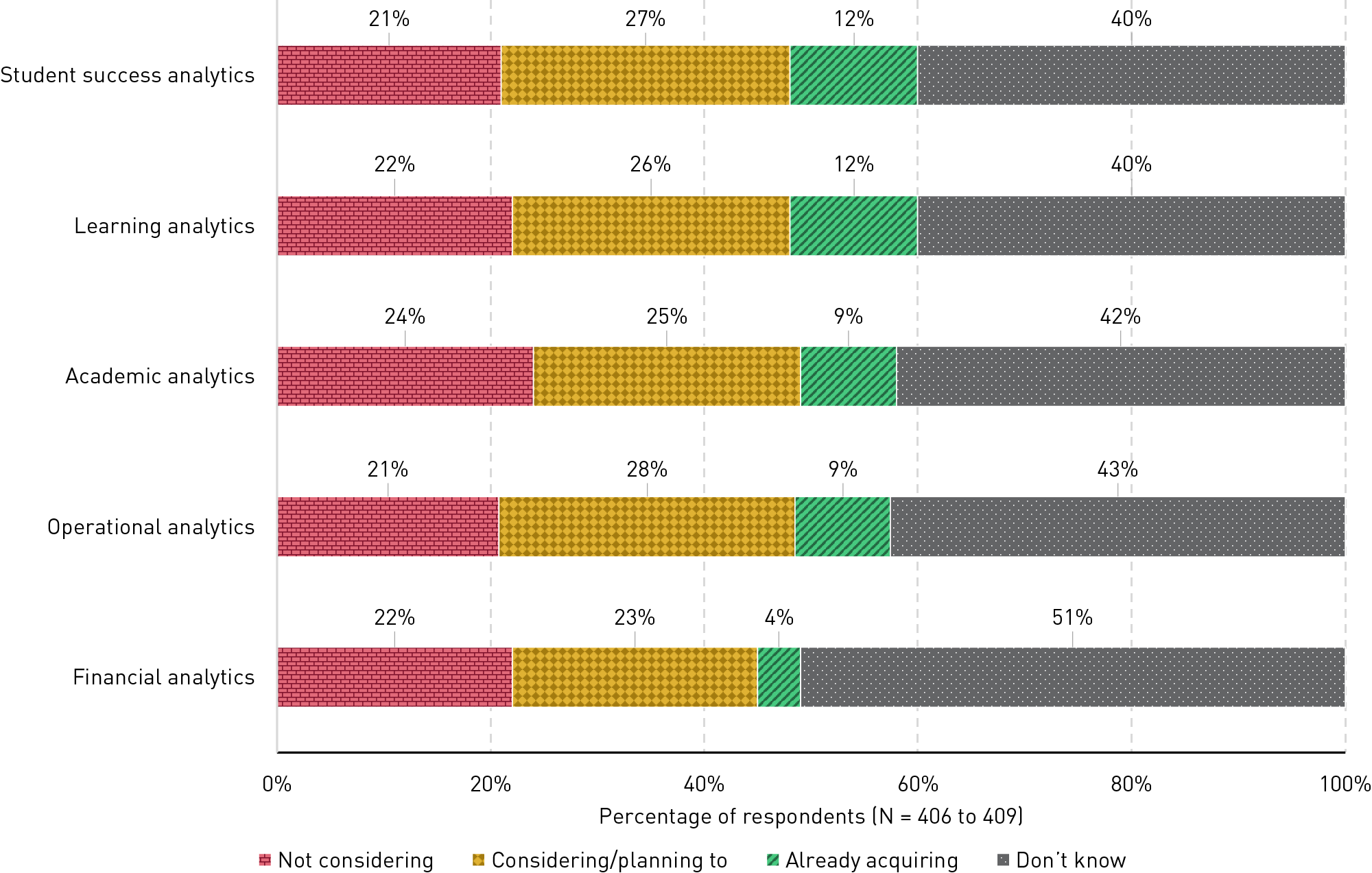Analytics and AI
AI tools are slowly gaining traction in higher education analytics. In line with findings related to strategy and use of newly integrated AI tools, we found that relatively small numbers of institutions are using AI tools to support analytics.1 Less than a quarter of respondents (22% or fewer) said that their institution is using AI tools to support the different use of analytics (see figure 24). The types of analytics most often using AI tools (by a small margin) were learning analytics (21%), student success analytics (22%), and academic analytics (19%). As institutions enhance their analytics capabilities and efforts, they will need to carefully explore advanced AI solutions that can help them better leverage their data.

Institutions are cautiously exploring new AI tools for analytics. Only a few respondents (12% or fewer for each type of analytics) said their institution is in the process of acquiring new AI tools to support analytics (see figure 25). Most respondents are uncertain about the adoption of new AI tools, with the highest uncertainty around financial analytics (51%). For those who were more certain, a significant number indicated that their institution is either in the planning phase or that they are not considering acquiring new AI tools. Among respondents whose institutions are considering, planning to acquire, or already acquiring new AI tools for analytics, a majority (68%) indicated that these tools will be used to supplement existing analytics tools and practices. Meanwhile, 25% said the tools will be used primarily for exploration, and 18% expect them to replace current analytics tools and practices. The finding that only a minority of institutions are using AI tools to support analytics may be explained by concerns about the challenges surrounding AI use. We found that a plurality of respondents (41%) believe that AI will exacerbate current data challenges, compared to 18% who think it will have no impact, and 16% who expect it to alleviate these challenges.

Respondents were split when asked about strategic efforts toward the use of AI in analytics. A little over a third of respondents (35%) said that their institution is engaging in strategic efforts toward the use of AI in analytics, while 35% said their institution is not engaging in efforts, and 31% were unsure. Of those who were aware of their institution's strategic efforts, a plurality (46%) said that these efforts are collaborative (shared between those working on analytics and those working on AI strategy). Fewer respondents said these efforts are being driven mainly by those working on AI strategy (29%), and 19% said efforts are being driven mainly by those working on analytics strategy. Institutions will need to consider the integration of analytics and AI and, as part of this, they should encourage strong collaboration between the two areas to ensure a comprehensive strategy can be developed and carried out.
Note
-
Questions about the use of AI tools to inform the functional areas were only asked of participants whose institutions reported utilizing the different functional types of analytics.
↩︎